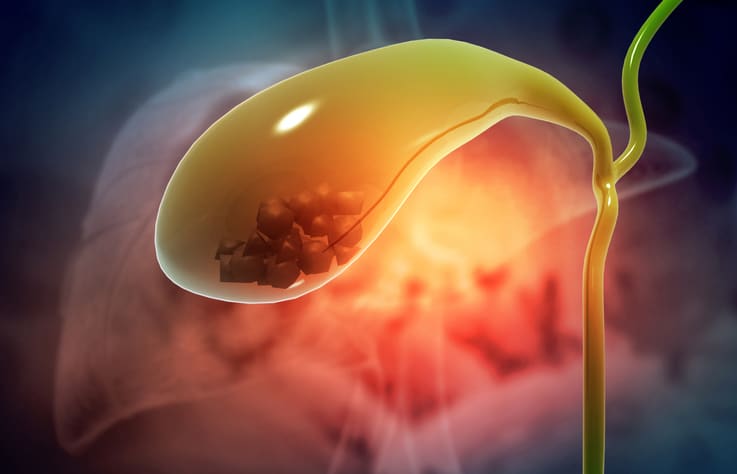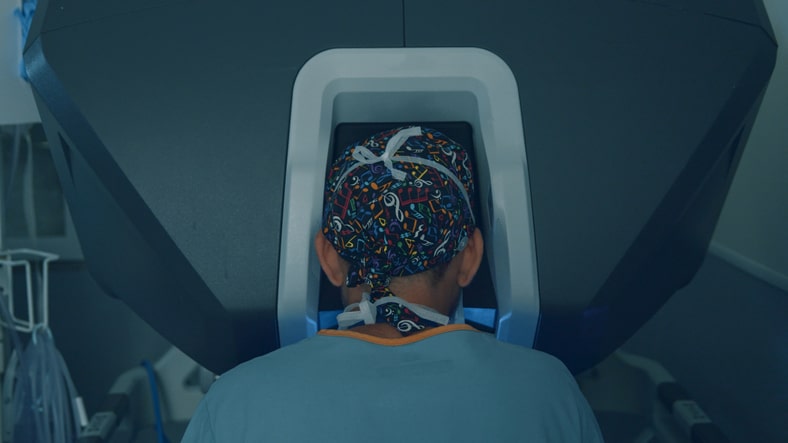Elaine Hill thrives on being that vibrant splash of color in everyone’s day, but years of digestive discomfort from gallstones left her feeling nothing but blue until she discovered a solution: robotic gallbladder removal at Methodist Charlton Medical Center.
“I love nothing more than bringing a smile to someone’s face or laughter to their day,” says Elaine, 59, a longtime City of Dallas employee who dyes her hair a different color on the first of every month. She went with a fiery orange to celebrate fall, and was scarlet for the holidays.
But her colorful personality couldn’t shine through last September when she had to go to the emergency room for cholecystitis, inflammation more commonly known as a gallbladder attack.
“They took very good care of me,” Elaine says. “Every single person who worked with me was amazing.”

When gallstones get lodged in a bile duct, it can lead to a painful gallbladder attack.
LIKE CHILDBIRTH
For years, Elaine endured frequent nausea and discomfort after eating, especially when she ate fast food or spicy meals.
“I thought it was just part of getting older and changes to my digestive system,” she says.
What she didn’t know at the time was that her digestive pain was caused by gallstones that had created a blockage.
“Gallstones don’t always cause symptoms,” says Richard Alexander, MD, general surgeon on the medical staff at Methodist Charlton. “But when one lodges in a duct, the symptoms become more obvious and can vary in severity.”
For Elaine, the pain she felt when she awoke on Sept. 13, 2023, was like nothing she had felt before, with one exception.
“The pain was so bad I felt like I was in childbirth again,” says the 59-year-old mother of two adult daughters. “When I vomited, the color was dark brown. I called my insurance hotline and they told me to go to the nearest emergency room.”

Elaine has put her digestive pain behind her, thanks to surgery to remove her gallbladder.
TIME TO DECIDE
That was the brand new ER at Methodist Charlton, where Elaine was given pain medication and underwent a series of exams, including an ultrasound and CT scan, along with blood work.
As the attending physician, Dr. Alexander explained that a hardened deposit of bile had gotten lodged in a duct of Elaine’s gallbladder. He informed her that the chance of another attack was significantly higher now that she’d had one.
Elaine was surprised to learn that pain medication and antibiotics are one of the few medical options available to treat a gallbladder attack. But there was an alternative.
“I was pretty wary of surgery to remove my gallbladder,” Elaine says. “I knew my chances of another attack were high, but I needed to think about it during my overnight hospital stay. He fully supported my taking my time to decide, which I greatly appreciated.”
The gallbladder stores extra bile created in the liver, so when it’s removed that digestive fluid flows directly from the liver to the small intestine. After surgery, a patient may have more trouble digesting fats but can return to a normal diet after recovery.

During a robotic-assisted surgery, the surgeon controls the device at all times.
ROBOTIC SURGERY
Elaine was ready to learn more when Dr. Alexander came back the next morning. He told her that a robotic-assisted surgery is a minimally invasive option that allows for a quicker recovery.
“I explained that the procedure would require an incision less than an inch in length in the belly button,” he says. “I would then use a high-definition, 3D camera view to remove the gallbladder.”
The operation would last less than an hour, he told her, and patients could go home a day afterward, if not the same day. That sealed the deal for Elaine, who had surgery that afternoon and was released the very next day.
Since her procedure, Elaine has embraced her new normal of eating a healthy diet, walking after meals, and losing weight.
“I feel so healthy and confident,” she says, “which just fuels my passion for being an uplifting person for the people in my life.”






